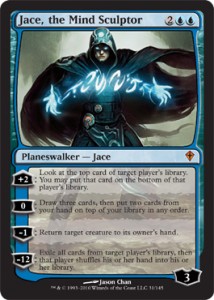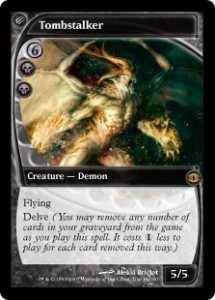Are you a Quiet Speculation member?
If not, now is a perfect time to join up! Our powerful tools, breaking-news analysis, and exclusive Discord channel will make sure you stay up to date and ahead of the curve.
What makes a trade good? Why do you actively try to pick up certain cards and offload others?
The short answer, of course, is to profit. But that’s not all there is to trading, and today I’m going to look at some of the motives your trade partners might have for trading, and why you have to look further than the numbers to determine if a trade is profitable.
Let’s start by looking at some of the incentives players have when trading.
To profit
No reason not to start with the reason why most of you are reading this. This site exists to make a profit from trading. For the sake of this week’s column, I’m going to assume everyone knows prices, techniques and other tools necessary to turn profits trading. Instead I want to highlight some factors that can work against your profits, even if you are making money on paper.
A common one that slips by people is that there is more to card values when taken as a whole than individual prices. 70 $1 rares are not worth a Jace, the Mind Sculptor. The reason for this lies on the back end of the trading process. Jace sells on Ebay for $70. 70 $1 rares sell for… nothing. This concept is defined as trading down, and obviously is not desirable. This is why you should attempt to trade up whenever you can, and, more importantly,  why you need to be wary of trades when your partner is offering a number of cards for your big-ticket items. The profit margin on trading down needs to pretty huge for you to make these trades.
why you need to be wary of trades when your partner is offering a number of cards for your big-ticket items. The profit margin on trading down needs to pretty huge for you to make these trades.
Another trap you can fall into is letting cards rot without even realizing it. This most often occurs by not realizing the effects of rotations. For instance, if you traded for Maelstrom Pulse at $15 figuring it would be great trade fodder. Unfortunately, you didn’t find a trader who wanted it, and now it’s rotated out, and currently commands only an $8 price tag.
The way to avoid this is to take a regular inventory (say, every month) of your binder, and act according to coming rotations. The high-priced cards from Alara began trending down a month or so before the set’s actual rotation. If you are following these trends using websites like Black Lotus Project (you should be), then you would know it’s time to unload these cards. A week before rotation is too late to start moving your cards. I suggest at least a month out from rotation to start moving your cards, whether that is to step up your game in trading or selling. The worst thing you can do is let cards rot in your binder past their expiration date.
To play
As a trader, this is my favorite player to trade with. They want what they need, and are usually willing to sell the farm to get it, assuming the farm isn’t in their new deck. You need to understand that, when trading with someone in this position, they have no interest in trading with you if you don’t have what they want.
I fall into this category myself occasionally. Ninety percent of my trading is done for profit, but sometimes I need to get cards, and it is an entirely different paradigm than trading for the sake of trading.
I would venture to say that the majority of traders you’ll encounter trade for this reason, and there are a few important things to remember. Foremost is that playability is extremely fleeting. You have to be current in your knowledge of formats and card prices, and be willing to part with your cards. You should also charge a good premium on the cards you’re trading here because of how fickle demand is among this group.
While it’s great to look through your binder and see cool things like Survival of the Fittest and Tombstalker, they really won’t do anything for you in trading if the players in your area don’t care about Legacy. This is the case in my city, and cards like these don’t move often, if at all. This principle also applies to Extended; so if this is the case in your store, make sure to move these cards online rather than keeping them in your binder.
To collect
With people out to collect, you encounter some of the same issues as the group above. They only want certain cards, and are plenty willing to trade away their excess stuff to get it. The problem is that they won’t trade anything they only have one (or four) of. This is especially frustrating since they are only  likely to have one (or four) of a particular card, since that is their end goal.
likely to have one (or four) of a particular card, since that is their end goal.
This is the case where you are most likely to encounter someone who doesn’t know card prices. As illustrated by the debate surrounding Peter Jahn’s article about for-profit traders, opinions on how to approach this situation vary greatly. As I’ve always advocated, I suggest being honest with nearly all traders you encounter (the exception is wannabe “sharks,” but that’s another topic). So when trading with these guys, you need to be aware of their goals and motivations for them.
These guys are best to trade with right after a set releases and they’re in need of cards. You can easily find them at prerelease and release events, and they are easy to trade with. They are perfectly willing to trade down if they have extras, so take advantage of that fact without taking advantage of the person. Remember that emotional attachment to cards runs high with them, as does the desire to complete sets, so don’t try to push for trades they aren’t completely comfortable with.
Knowing why your trading partner is trading is a huge step in maximizing profits, and the best way to accomplish this is by talking to them. Take the time to get to know the trader, and it will go a long way toward building a sustainable and profitable trading environment.
Next week I’m planning on starting a three-week (mini) series of articles about creating, organizing, and pruning your trade binder, so I would love to hear any feedback or suggestions of things you’d like to see included. Just post them in the comment section, message me on Twitter, or e-mail me at chosler.stu@my.okcu.edu.
Until then,
Corbin Hosler
@Chosler88 on Twitter





Good advice, and as always a reminder about the nonequivalence trading down, even if the smaller valued items sum to a higher raw dollar value, is appreciated.
I'd also certainly like to see an article on how to swim with other sharks, and what can you do to salvage a trade if you've realized you're trading with one.
As for what to discuss in articles about organizing your trade binder — I'd like to hear about how to best get people to look through your entire binder. If you put all of your good stuff in the front, they'll stop looking after they pass the section. If you organize by color or set, they might flip to a specific section and ignore the rest. But a purely unorganized binder would be tedious to browse too. So where's the happy medium?
Also, how many binders should I set up? One for Standard, one for EDH/Legacy? Should I ever bother bringing uncommons or commons with me? Eventually it becomes logistically cumbersome, hard to curate, and even harder to use to find cards for decks I'm building.
My thought is to set up pages of cards used in popular decks – commons and uncommons included. (e.g. the RDW section, the Ramp section, the UW Control section), the Utility/Sideboard section, etc.
@Lackey: I already wrote an article on trading with Sharks here called "Shark Infested Waters", go dig it up and I think you will like it.
When it comes to organizing the binder, I say whatever you are comfortable with because knowing where your cards are is probably the most important part of a binder.